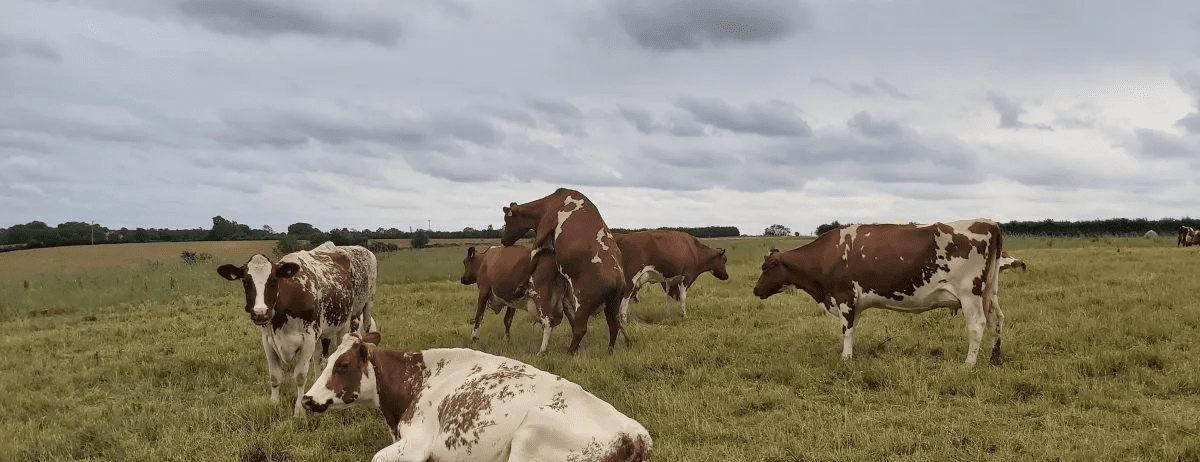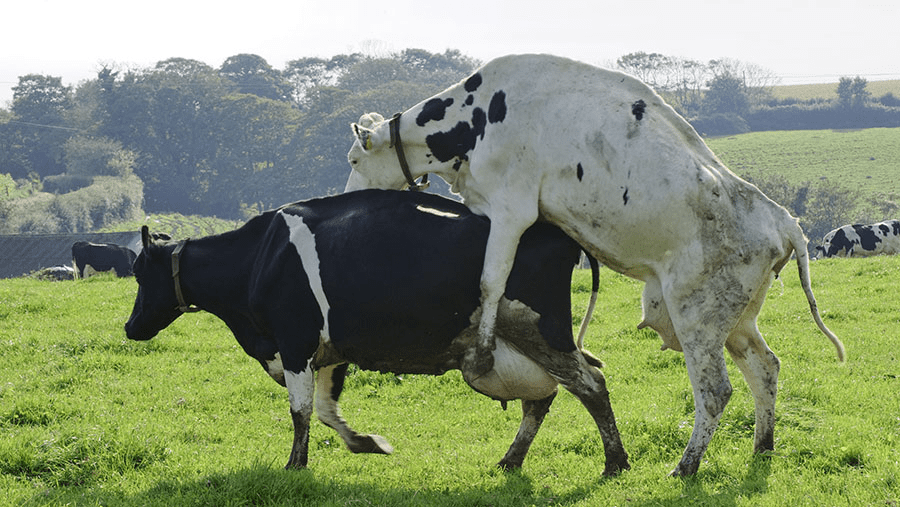Heat detection in cows refers to the process of identifying when a cow is in estrus, or “heat,” which is the period when she is most fertile and ready to mate. During this time, the cow’s body signals that she is ovulating and can become pregnant if she mates or is artificially inseminated.
Recognizing when a cow is in heat is crucial for successful breeding, as it ensures that insemination occurs at the right time. Signs of heat in cows include restlessness, increased vocalization, mounting other cows or allowing other cows to mount her, and a noticeable change in behavior, such as reduced appetite or a drop in milk production. Physical signs may also include swelling or redness of the vulva and the presence of clear mucus discharge.
Accurate heat detection helps farmers time breeding or artificial insemination to maximize the chances of conception, leading to more efficient reproduction and better herd management.
Different signs are carefully studied to detect heat in cows. Techniques of heat detection and gadgets are crucial for effective reproductive management when combined with skilled observation.
Cows using a combination of heat detectors (KaMaR) and CHALK marking on the tail were found to be more efficient than using detectors alone. Visual observation with tail paint is 98% effective compared to 91% with just heat watches.
Read Also: Heat Detection Methods and Signs in Farm Animals
Secondary signs of heat include:
- Frequent urination.
- Chin resting.
- Back rubbing.
- Walking along fences.
- Loss of appetite.
- Sudden drop in milk production.
Other supportive signs are:
- Licking.
- Sniffing.
- Lifting the head.
- Curling the lips.
- Flehmen response (curling of lips after touching the genitalia of a receptive animal).
Cows may show willingness to mount others, even if neither cow is willing to stand for mounting. Roughened tail heads or mud on the rump suggest that other animals have tried to mount her. Restlessness might indicate that a cow is about to go into heat. Cows in pre-heat might bawl more, head-butt, or sniff and lick other cattle.
Clear, stringy mucus discharge hanging from the vulva or smeared on the pin-bones or rump indicates a cow about to be in heat or already in heat. Bloody mucus often appears 2-3 days after heat and should be noted for tracking heat cycles every 17-21 days.
Physical signs of estrus include:

- Swelling of the vulva.
- Reddening of the vulva (bright cherry pink color).
- Excess mucus discharge.
- Tone in the uterus.
Cows coming into heat often form small groups of three to five, known as sexually active groups (SAG). Heat detection is easier when such groups are present in the herd.
Read Also: Methods of Estrus or Heat Detection in Pigs
Heat detection tools include:
- Vaginal pH.
- Vaginal smear.
- Vaginal conductivity measurement using a probe.
- Fern pattern of cervical mucus discharge.
- Endometrial biopsy.
- Cervical mucus glucose content.
- Uterine tone.
- Changes in parlor behavior.
- Milk yield fluctuation.
- Temperature measurement.
- Heat expectancy charts.
- Tail painting.
- Androgenized cows.
- Chin ball device.
- Gomer bulls.
- Bio-stimulation.
- Pressure-sensitive KaMaR or BeaCon heat detectors.
- Electronic heat mount detectors.
- Heat patches with visible color change.
- Pedometers and activity meters.
- Video cameras and CCTV recording.
- Electronic odor detectors.
- Milk progesterone detection.
- Heat detection by 17β-estradiol and P4 in milk.
- Infrared spectroscopy and magnetic resonance spectra.
- Estrus synchronization.
In summary, effective heat detection in cows relies on combining various tools and observations. Using heat detectors like KaMaR with tail marking is more efficient than using detectors alone. Visual methods, such as tail painting, are also highly effective.
Signs of heat include physical changes (e.g., swollen vulva, mucus discharge) and behavioural changes (e.g., restlessness, mounting attempts). Various detection methods, from electronic sensors to visual observation, can help in accurately identifying heat and managing reproductive cycles.
Read Also: Low-Maintenance Plants for Beginners

